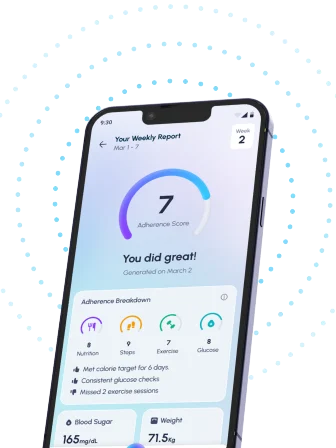Table of Contents
- Understanding Iritis: Symptoms, Causes & Treatment
- Iritis and Diabetes: Exploring the Concerning Link
- What are the Early Warning Signs of Iritis?
- Iritis Treatment: Options and Management Strategies
- Is Iritis Linked to Diabetes? A Comprehensive Guide
- Frequently Asked Questions
- References
Have you ever experienced sudden eye pain, redness, and blurry vision? These could be signs of a serious condition called iritis, and understanding its connection to other health issues is crucial. This blog post focuses on Understanding Iritis: Symptoms, Causes, and Its Link to Diabetes. We’ll explore the telltale symptoms of iritis, delve into the various potential causes, and importantly, examine the often-overlooked link between this eye inflammation and diabetes. Learning about iritis is vital for early detection and effective management, so let’s dive in!
Understanding Iritis: Symptoms, Causes & Treatment
Understanding Iritis Symptoms
Iritis, a painful inflammation of the iris (the colored part of your eye), can manifest in various ways. Common symptoms include eye pain, redness, blurred vision, and sensitivity to light (photophobia). You might also notice the appearance of small, dark spots in your vision or even changes in pupil size. Early diagnosis and treatment are crucial to prevent serious complications, including vision loss. In tropical and Indian climates, where eye infections are more prevalent, prompt attention is especially vital.
Causes of Iritis
Iritis can stem from various underlying conditions, including infections (like viral or bacterial), autoimmune diseases, and injuries. However, a significant concern, particularly relevant to India and other tropical regions, is its association with diabetes. While not directly caused by high blood sugar, diabetes significantly increases the risk of developing iritis. This is because diabetes can weaken the immune system and make individuals more susceptible to inflammation.
Treatment Options for Iritis
Treatment typically involves eye drops to reduce inflammation and pain, such as corticosteroids. In some cases, oral medications might be necessary. Regular eye exams are paramount, especially for individuals with diabetes. Early detection and treatment can significantly improve outcomes and prevent vision-threatening complications. It’s important to note that the nearly 15% lifetime risk of diabetic foot ulcers, often leading to amputations, highlights the importance of comprehensive diabetes management, including regular eye checkups to detect conditions like iritis early. Managing other chronic conditions is also important; for example, understanding how to manage conditions like Irritable Bowel Syndrome can improve overall health. While unrelated to eye health directly, exploring options like Homeopathic Medicine for Irritable Bowel Syndrome or Ayurvedic Medicine for Irritable Bowel Syndrome might be helpful for some individuals.
Seeking Medical Attention
If you experience any of the symptoms mentioned above, particularly if you have diabetes, seek immediate medical attention. In India and other tropical countries, access to quality eye care varies, so proactive healthcare seeking is essential to protect your vision. Don’t delay; prompt diagnosis and treatment can make a significant difference in preserving your eyesight.
Iritis and Diabetes: Exploring the Concerning Link
Diabetes significantly increases the risk of various complications, and eye problems are unfortunately among them. One such serious complication is iritis, a painful inflammation of the iris, the colored part of the eye. While iritis can occur in individuals without diabetes, the connection between the two is a critical concern, especially in regions like India and other tropical countries where both diabetes and eye-related diseases are prevalent.
Understanding the Connection
The exact mechanism linking diabetes and iritis isn’t fully understood, but it’s believed to be related to the chronic inflammation associated with poorly controlled blood sugar levels. This chronic inflammation can affect various parts of the body, including the delicate structures of the eye. Furthermore, the increased risk of infections in people with diabetes can also contribute to the development of iritis. The same underlying mechanisms that lead to complications like diabetic nephropathy (kidney disease), where nearly 30% of diabetics are affected, may also play a role in increasing susceptibility to iritis. Early detection and management of diabetes are crucial in mitigating this risk. This is further complicated by conditions often associated with diabetes, such as The Link Between Diabetes and Fatty Liver, which can exacerbate inflammation throughout the body.
Recognizing Iritis Symptoms
Symptoms of iritis include redness, pain, blurred vision, and sensitivity to light. If you experience these symptoms, particularly if you have diabetes, seek immediate medical attention. Early diagnosis and treatment are vital to prevent potential vision loss. In India and other tropical countries, access to timely ophthalmological care can be a challenge, so proactive monitoring of blood sugar levels and regular eye check-ups are highly recommended. Managing weight is also crucial, as highlighted in our blog on Understanding the Link Between Diabetes and Obesity.
Taking Action
Regular eye examinations are essential, especially for individuals with diabetes residing in India and other tropical countries. Maintaining optimal blood sugar control through diet, exercise, and medication, as advised by your doctor, is paramount in reducing your risk of developing iritis and other diabetic complications. Don’t hesitate to consult an ophthalmologist if you experience any concerning eye symptoms. Your vision is precious; protect it.
What are the Early Warning Signs of Iritis?
Iritis, a painful inflammation of the iris (the colored part of your eye), can manifest subtly, making early detection crucial. Given India’s high incidence of early-onset diabetes, often appearing between ages 25-40, understanding these early signs is particularly vital. Ignoring symptoms can lead to serious vision complications.
Recognizing the Initial Symptoms
Early warning signs of iritis often include eye pain, sometimes described as a sharp, stabbing sensation. You might also experience blurred vision, redness in the affected eye (often appearing more intense than a typical “pink eye”), and increased sensitivity to light (photophobia). Some individuals notice eyelid swelling or the presence of small black spots or floaters in their vision. It’s important to note that these symptoms can mimic other eye conditions, highlighting the importance of prompt professional assessment.
The Diabetes Connection
The link between iritis and diabetes is significant, especially in regions like India with a high prevalence of the disease. Iritis can be a complication of diabetes, arising from poor blood sugar control. Therefore, individuals with diabetes, particularly those experiencing early-onset cases, should be especially vigilant in monitoring for these eye symptoms. Early diagnosis and management of both diabetes and iritis are key to preserving vision. While iritis is an eye condition, managing underlying health conditions like diabetes is crucial. Understanding the symptoms of other serious conditions, such as those detailed in Symptoms of Atrial Myxoma – Expert Diagnosis & Care, can highlight the importance of seeking prompt medical attention for any concerning symptoms.
Seeking Immediate Help
If you experience any of these symptoms, especially if you have diabetes, seek immediate medical attention. Prompt diagnosis and treatment by an ophthalmologist are essential to prevent potential long-term vision problems. Don’t delay; early intervention is key to protecting your eyesight. The rapid onset of some conditions, similar to the urgency in addressing iritis, emphasizes the importance of recognizing symptoms early. For instance, understanding the symptoms and rapid progression of Hyperpyrexia: Causes, Symptoms and Diagnosis can underscore the need for swift medical intervention.
Iritis Treatment: Options and Management Strategies
Iritis, a painful inflammation of the iris, requires prompt and effective treatment to prevent vision-threatening complications. Treatment strategies vary depending on the severity and underlying cause, which can sometimes be linked to conditions like diabetes. Early diagnosis is crucial, especially in regions like India and other tropical countries where access to specialized eye care might be limited.
Medical Management of Iritis
Treatment typically involves managing the inflammation and addressing the underlying cause. This often includes corticosteroid eye drops to reduce swelling and pain. In more severe cases, oral corticosteroids or even injections might be necessary. Cycloplegic eye drops, which help paralyze the eye muscles, can alleviate discomfort. For patients with iritis linked to underlying conditions like diabetes, managing blood sugar levels is paramount. Poorly controlled diabetes can exacerbate inflammation and increase the risk of further complications. The high prevalence of diabetes in India and other tropical countries highlights the importance of comprehensive diabetes management in preventing iritis. Remember, diabetic neuropathy, affecting 30-50% of diabetic patients, can also impact a patient’s ability to manage their condition and seek timely treatment for complications like iritis. Managing underlying conditions is key, much like the approach needed for How to Treat Inflammatory Bowel Disease.
Lifestyle Adjustments and Prevention
Beyond medical intervention, adopting a healthy lifestyle plays a crucial role in managing iritis and preventing future episodes. This includes maintaining a balanced diet, regular exercise, and stress management techniques. For individuals with diabetes, strict adherence to their treatment plan is essential. Regular eye check-ups are also vital, especially for those with diabetes or a family history of eye conditions. Early detection and prompt treatment are key to preserving vision. Seek immediate medical attention if you experience symptoms such as eye pain, redness, blurred vision, or sensitivity to light. In India and similar regions, proactive healthcare management is paramount for preventing vision loss from iritis and its associated conditions. A healthy diet, as discussed in Managing Osteoarthritis with Diet, can also contribute to overall well-being and potentially reduce the risk of certain inflammatory conditions.
Is Iritis Linked to Diabetes? A Comprehensive Guide
Iritis, a painful inflammation of the iris, the colored part of the eye, can significantly impact vision. While it can have various causes, a concerning link exists with diabetes, particularly relevant in regions like India and other tropical countries with high diabetes prevalence. Understanding this connection is crucial for early detection and effective management.
Understanding the Iritis-Diabetes Connection
Diabetes, especially poorly controlled type 1 and type 2 diabetes, increases the risk of developing iritis. This is because high blood sugar levels can damage blood vessels throughout the body, including those in the eye. This damage can lead to inflammation, potentially triggering iritis. Moreover, the high prevalence of hypertension in individuals with diabetes in India (over 60%) further complicates the issue, as hypertension can also contribute to vascular problems and eye inflammation. Recognizing symptoms early is vital. It’s important to understand the root causes of diabetes itself; for example, exploring whether diabetes is caused by a virus or bacteria can provide a broader understanding of the disease.
Recognizing Symptoms and Seeking Help
Symptoms of iritis include eye pain, redness, blurred vision, and sensitivity to light. If you experience these symptoms, especially if you have diabetes, seek immediate medical attention. Early diagnosis and treatment are essential to prevent potential vision loss. Regular eye examinations are also strongly recommended for individuals with diabetes to detect and manage any eye complications proactively. In India and similar regions, access to affordable and quality eye care remains a critical issue, highlighting the importance of preventative measures and timely intervention. While rare, it is important to note that other conditions can also contribute to diabetes; for instance, exploring the link between meningitis and diabetes is crucial for comprehensive understanding.
Taking Control: Actionable Steps
Maintaining optimal blood sugar control through diet, exercise, and medication is paramount in reducing the risk of iritis and other diabetic complications. Regular check-ups with your ophthalmologist and diabetologist are essential. Remember, proactive management of diabetes can significantly lower your risk of developing this serious eye condition.
Frequently Asked Questions on Iritis
Q1. What is iritis and what are its symptoms?
Iritis is a painful inflammation of the iris, the colored part of your eye. Symptoms include eye pain, redness, blurred vision, and sensitivity to light.
Q2. What causes iritis, and who is at increased risk?
Iritis can be caused by infections, autoimmune diseases, injuries, or underlying conditions like diabetes. People with diabetes, especially in tropical regions, are at a significantly higher risk.
Q3. How is iritis treated?
Iritis is typically treated with corticosteroid eye drops. In some cases, oral medications may also be necessary. Early diagnosis and treatment are crucial to prevent vision loss.
Q4. How can I reduce my risk of developing iritis?
Managing underlying conditions like diabetes is key to reducing your risk. Regular eye exams are also important, especially if you have diabetes, to detect iritis early.
Q5. What should I do if I think I might have iritis?
If you experience symptoms like eye pain, redness, blurred vision, or light sensitivity, seek immediate medical attention. This is especially important if you have diabetes, as prompt treatment is vital.
References
- A Practical Guide to Integrated Type 2 Diabetes Care: https://www.hse.ie/eng/services/list/2/primarycare/east-coast-diabetes-service/management-of-type-2-diabetes/diabetes-and-pregnancy/icgp-guide-to-integrated-type-2.pdf
- What is Diabetes: https://www.medschool.lsuhsc.edu/genetics/docs/DIABETES.pdf




